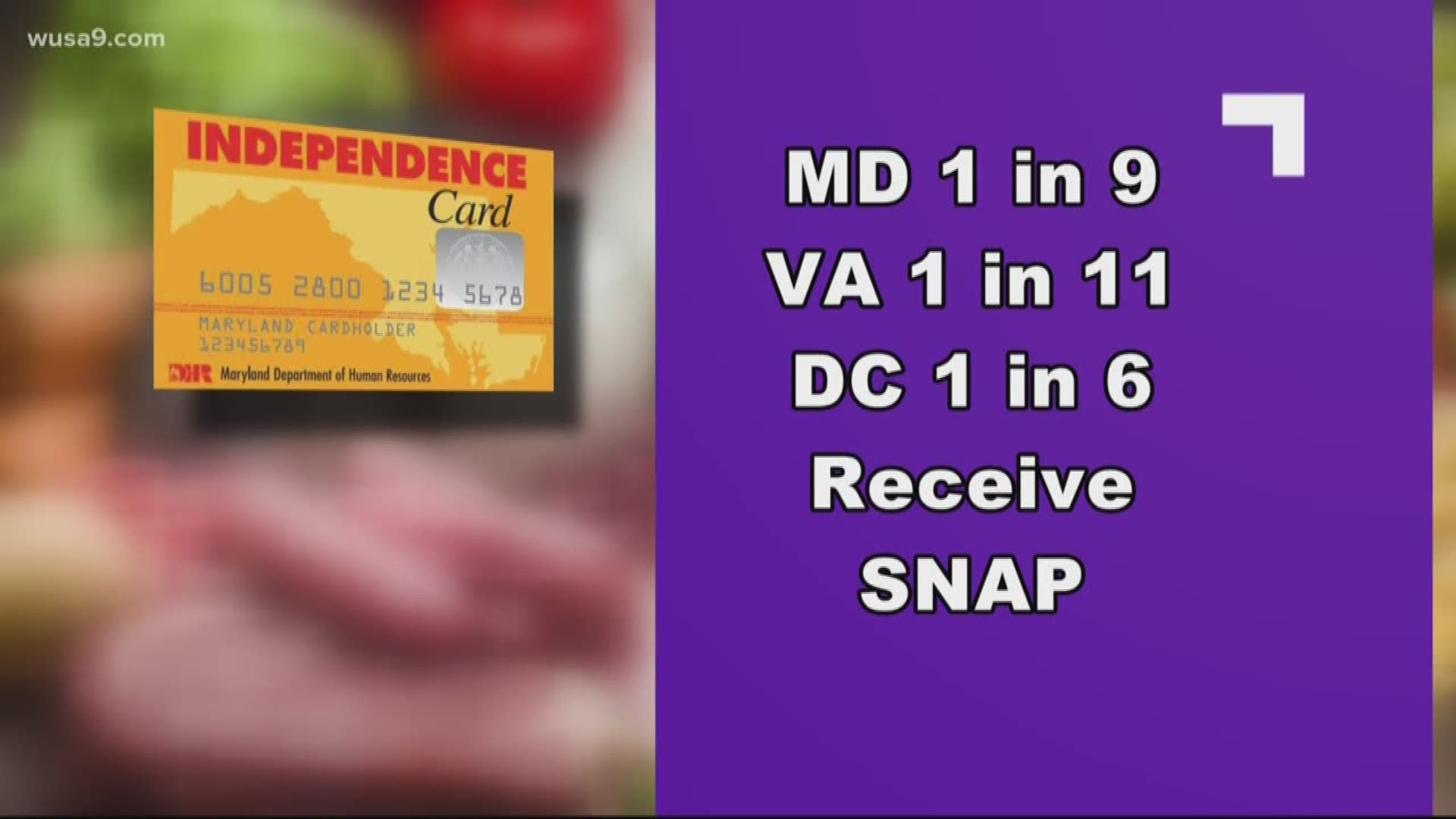WASHINGTON — If you fear you may lose your SNAP food benefits under new rules adopted by the US Department of Agriculture, you have until Apr. 1, 2020 to try and do something about it.
You are in the crosshairs for your federal food benefits to be cut if you are:
- Aged 18 to 49
- Not caring for children and are not pregnant
- Able-bodied
- Not working at least 20 hours a week for the previous three months.
There are two primary ways to keep the benefits coming, according to the new federal rule:
- Find and keep a job that consistently gives you at least 20 hours a week of work or increase the self-employment hours you claim.
- Enroll in a qualifying education or training program offered by your state designed to help you get training for a job. The human service agencies that oversee SNAP in the District of Columbia, Maryland, and Virginia are supposed to be able to direct people to these programs.
- Apply for an individual waiver with your social services agency which can determine if any of your personal circumstances might qualify you to continue receiving benefits.
"I think a lot of people will lose benefits because it's very difficult for a lot of these folks to get stable employment," Elaine Waxman, a senior fellow at the Urban Institute said.
"They may have fairly low educational attainment. They may be unstably housed. They may have mental health issues that create barriers."
"Most people try to work if they can. If they’re not achieving the level of work they are going to risk the loss of benefits," Waxman said.
Waxman noted that the job training and education programs linked to SNAP benefits can be difficult to get into because they are already full.
Food benefits should continue for the following categories of recipients, According to the US Department of Agriculture:
- Parents raising children in their households or pregnant women
- People 50 and older
- Disabled people
- Able-bodied adults who work at least 20 hours per week.
More than 1.5 million people in Maryland, Virginia and the District of Columbia depend on SNAP, according to data from the US Department of Agriculture and state social service agencies.
On in 9 residents of Maryland, 1 in 11 Virginians and 1 in 6 D.C. residents receive SNAP, according to The Center on Budget and Policy Priorities based on data from the USDA.
SNAP cuts are likely to affect an undetermined number of individuals in the following Maryland jurisdictions, according to a statement from the state's Department of Human Services:
- Allegany County
- Garrett County
- Baltimore City
- Harford County
- Caroline County
- Cecil County
- Dorchester County
- Kent County
- Queen Anne’s County
- Somerset County
- Talbot County
- Wicomico County
- Worcester County
"Our primary concern is supporting and providing relief to vulnerable Marylanders during this unpredictable time," wrote Katherine Morris, a spokesperson for the Maryland DHS. "We continue to explore the options available to the state in order to best support our residents and local communities."
In Virginia, about 4500 recipients in 55 jurisdictions around the state may be affected, according to a statement from the state's Department of Social Services.

